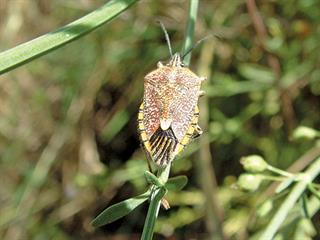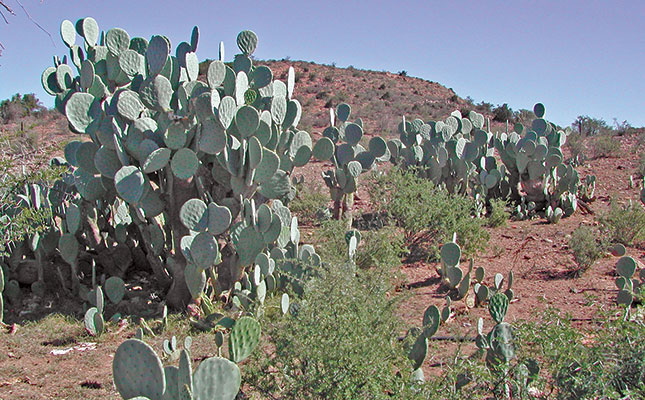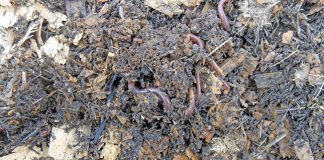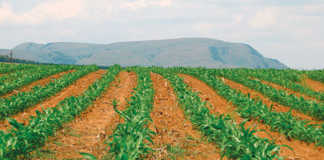
Scientific name: Agonoscelis versicolor
Family: Pentatomidae
Distribution: Widespread over much of Africa
Description
Nearly all parts of a plant are targeted by pests. However, most pests ignore the seeds, as they are often unpalatable or covered by a hard shell. But there are exceptions. The seeds of the sunflower, for example, are favoured by the sunflower seed bug. This is about 1cm long, shield-shaped, and maroon-red with yellow segments along its sides.
Despite its name, this widespread bug feeds on several other crops as well: cowpeas, millet, sesame, sorghum and soya beans.The bug has a needle-like mouthpart through which it injects digestive saliva into the seed. This dissolves the inner flesh of the seed, which the bug then sucks out. Seeds that have been attacked turn brown or black and die.
Reproduction
Females lay their eggs on the underside of fallen leaves. The eggs are oval and white, turning a dark blue as hatching nears.
A female will lay 50 to 60 eggs at a time, with 10 batches being laid in total, spread over several leaves, or even other plants.
The nymphs (larvae that look like small versions of the adults) are orange with yellow and brown markings.
Control measures
The degree of damage this bug causes largely depends on its distribution. For example, in South Africa it is regarded as a minor pest of sunflower, whereas in the Sudan it is a serious pest of millet. Given optimal conditions, its numbers may increase to such an extent that it wipes out an entire crop. Sudan’s department of agriculture has invested heavily in trying to determine what causes these population increases, and the best means of managing the problem.
Control varies from region to region. In South Africa, the numbers of sunflower seed bugs are so low that spraying is seldom necessary and the insects can be removed manually. Although this may be time-consuming in a large crop, it can be the most effective means of control without having to resort to expensive insecticides.
Where chemical application is necessary, use a product that is more viscous – this will stick to the bug more readily. I have achieved good results with pyrethrum. This is a natural insecticide extracted from the dried flowers of the chrysanthemum family.
Due to the bug’s heavy armour, its natural predators are mostly limited to assassin bugs, parasitoids, spiders and birds. Fortunately, these do a good job in keeping the bug under control.
Please note: this series is intended primarily as a guide to identifying pests. For help with specific control measures, please consult your agricultural extension officer.
Botswana-based Paul Donovan promotes the use of biological control agents and advises farmers on the best ways to control crop pests.













